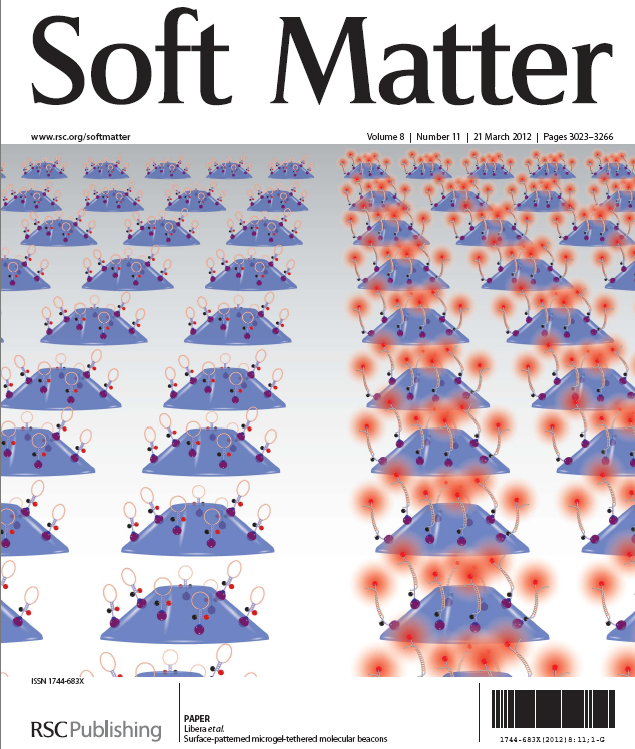Self-reporting Microarray Platforms that use
Molecular Beacon Probes

 We developed a novel platform in which molecular beacons are immobilized within highly hydrated microhydrogels, creating a local environment that mimics solution-based hybridization events, and does not compromise the inherently performance of molecular beacon probes.
We developed a novel platform in which molecular beacons are immobilized within highly hydrated microhydrogels, creating a local environment that mimics solution-based hybridization events, and does not compromise the inherently performance of molecular beacon probes.
This work appeared in the March 23, 2012, issue of Soft Matter (Volume 8, Number 11, pages 3067-3076) and the cover of the journal featured our publication.
Recent Publications from our group
Banada PP, Green R, Streck D, Kurathi R, Reiss R, Banik S, Montalvan I, Jones R, Marras SAE, Chakravorty S, and Alland D (2023) An expanded RT-PCR melting temperature coding assay to rapidly identify all known SARS-CoV-2 variants and sub-variants of concern. Scientific Reports 13. 21927. PMID: 38081834: PubMed Link
Ebraham L, Xu C, Wang A, Hernandez C, Siclari N, Rajah D, Walter L, Marras SAE, Tyagi S, Fine DH, Daep CA, and Chang TL (2023) Oral Epithelial cells expressing low or undetectable levels of human angiotensin-converting enzyme 2 are susceptible to SARS-CoV-2 virus infection in vitro. Pathogens 12. PMID: 37375533: PubMed Link